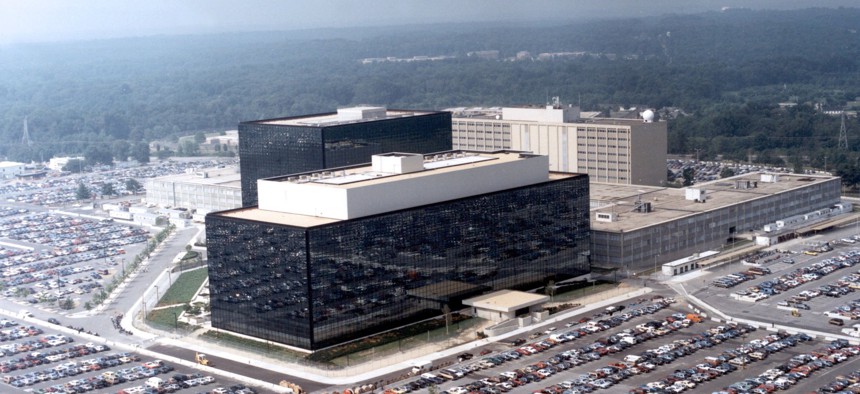Listen to your talent — leverage technology for classified

The National Security Agency's Commercial Solutions for Classified program can help support secure remote access to classified materials. Photo by NSA via Getty Images
An existing program that supports remote classified work could help solve an ongoing talent retention challenge for Gen Z feds.
With tech deeply embedded in our everyday lives — at home and at work — we expect it to be simple and value-add. There is no separation between the proverbial church and state when it comes to our devices. At work, some employers have made it easy to deploy and secure devices like the ones we use at home effectively, empowering their employees to work how they choose. However, the country’s largest employer, the federal government, lags in adoption.
Although some federal agencies offer flexibility for their workforce post-pandemic, there is a wide discrepancy between those who perform unclassified jobs and those who work in classified environments, whereby classified employees are in the office much more than their counterparts.
The irony is that a solution exists, referred to as CSfC, and it is backed by the National Security Agency. NSA created the Commercial Solutions for Classified program to streamline the process of delivering cybersecurity solutions using commercial technologies. CSfC may be used for up to Top Secret communications as determined by the authorizing official of each agency.
Previously, CSfC was difficult to implement and accredit, but that has changed. There is still tremendous rigor, as there should be since the solution entrusts people to handle sensitive information correctly from an unclassified location, but it’s the perfect solution for those cleared employees who are demanding more flexibility. CSfC also helps solve an ongoing talent retention challenge for Gen Z entering the workforce.
Here are some ways you can advocate for widespread CSfC adoption in your organization.
Secure remote access to classified materials is the new normal
As we emerged from the pandemic, the industry spoke about the "workplace of the future" or the "new normal," and most agreed that access to work environments from any device, anywhere, was critical. But for remote access to classified, organizations shied away from the topic because it was terribly hard, equipment was difficult to use and administer, and the accreditation process was daunting.
It’s time to change the conversation to one in which we talk about the capability being required for the new normal. We need to be in “get to yes” mode for our talent and drive CSfC onto modernization roadmaps and implementation plans. CSfC isn’t just for government customers but for every member of the Defense Industrial Base. Everyone should be clamoring to implement turnkey CSfC to help mitigate the talent challenge for the national security market.
Make drastic cuts to your infrastructure spend
Large-scale, end-to-end secure networks are expensive. The traditional Type 1 and network accesses for classified environments are burdensome and require onsite support. By comparison, the infrastructure to get rid of Type 1 and to support the complex network separation and protections for CSfC is now an economical Software as a Service stack with a turnkey Authority to Operate package.
Additionally, the hardened laptop has an integrated retransmission device — an NSA requirement — therefore it eliminates additional devices, wires and worries about if it’s charged. Lastly, the whole administrative model is streamlined, and easy over-the-air rekeying is included. Spend less, offer more. And acquisition has never been simpler.
Win the war for talent
Currently, according to the Alliance for Digital Innovation, Millennials and members of Gen Z make up only 7% of the federal workforce. Why? Partly because there are many barriers to entry for workers to find and apply for government positions, not the least of which are clearances. That burden won’t go away. But once these individuals do come on board, they quickly realize they have little to no flexibility and quit. Ouch. That’s a painful loss of needed talent and next-generation thinkers and innovators.
Our industry is already disadvantaged in the war for talent. Why lose that war because we do not apply technology and approaches that NSA has already approved? The time is now to welcome disruption — COVID outbreaks, other incidents and disruptions will continue to push our talent into working remotely, and our talent will continue to demand greater flexibility. If we want to keep that talent working for national security, CSfC is one giant step forward. Build the case to win the war for talent on proven technology — not only will you attract and retain talent, but they’ll be more secure and productive too.
Glenn Kurowski is chief technology officer at CACI.
NEXT STORY: How AI could take over elections—and undermine democracy


